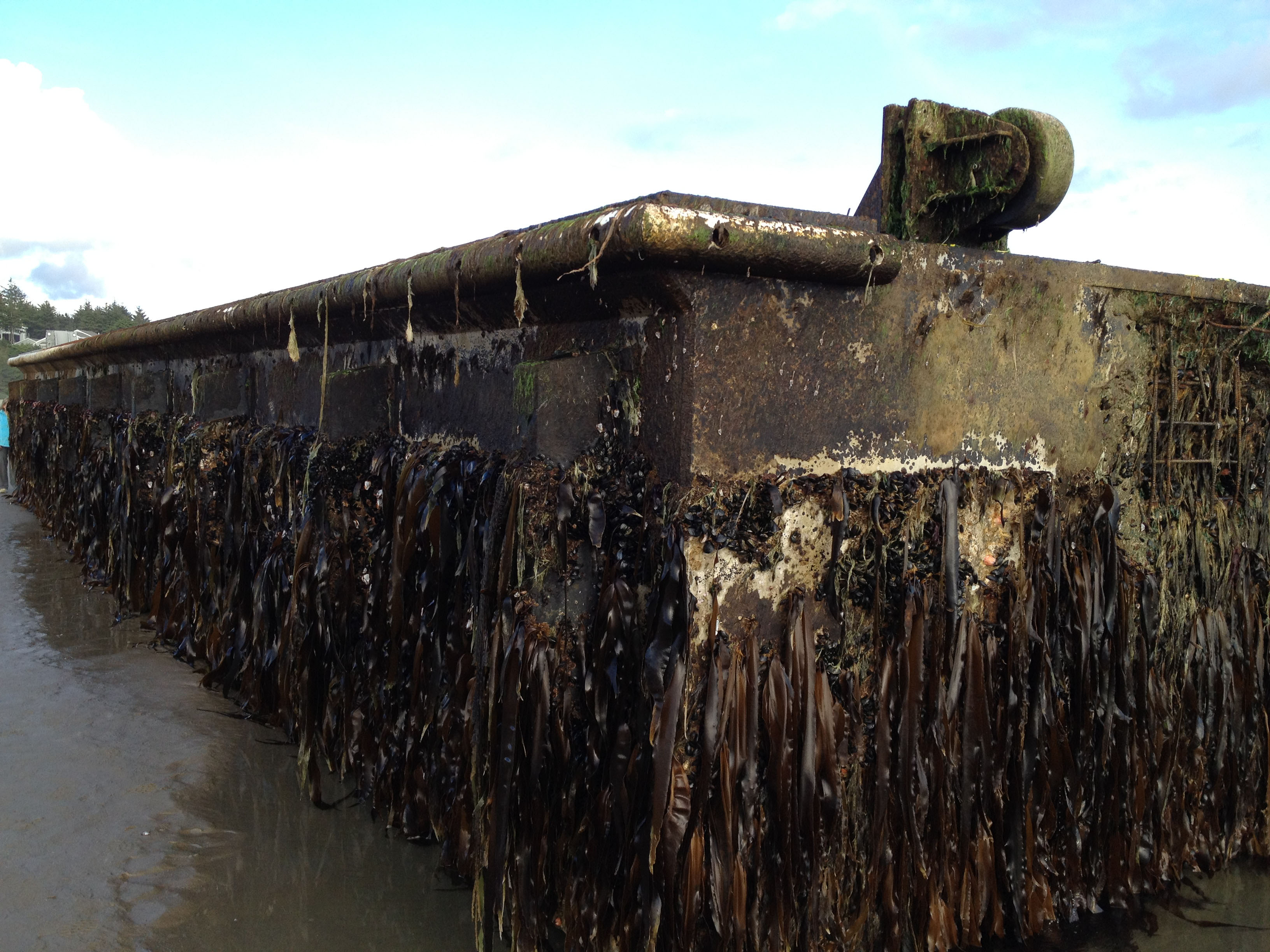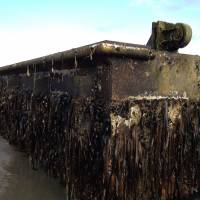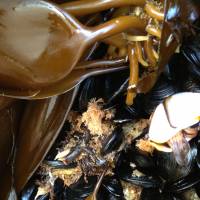The dock arrived almost like a gift, not quite on the doorstep of Dr. John Chapman, but on a beach 8 km from his office at Oregon State University's Hatfield Marine Science Center, on the western coast of the United States.
It was massive: A 188-ton, 20-meter long concrete, steel and Styrofoam block, draped in streamers of seaweed and plastered with mussels, barnacles, crabs and more than 100 other marine organisms. A plaque on the side and a bit of detective work revealed that it came from Misawa, Aomori Prefecture, where the March 11, 2011 tsunami ripped it from its foundations. Now, after 15 months at sea, it had washed up in Oregon.
Chapman has been studying "marine bioinvasions" — the introduction of sea plants and animals to new areas, where they sometimes wipe out local species — for 40 years, but he very soon realized he was seeing something new.
"The dock was covered mostly with things from Asia. That was completely against our predictions," he said. "Invasion ecologists, myself included, thought that (coastal) organisms drifting across the ocean for a year or so — that would be just about impossible."
In the 18 months since the dock arrived, Chapman and his colleagues have been studying the species they collected from it. This March they also traveled to Misawa to survey coastal organisms there. Their findings, he said, have overturned what he thought he knew about pathways for marine bioinvasion.
"This is probably the biggest experiment in invasion ecology ever done," he said — although it came, he acknowledged, with an unimaginable cost in human suffering.
According to rough official estimates, the 2011 tsunami washed about 5 million tons of debris into the ocean, and about two-thirds of that quickly sank. The remainder was carried along the coast of Japan, then out into the Pacific Ocean.
Where it went from there has varied by item, according to Jan Hafner, a scientific computer programmer at the University of Hawaii's International Pacific Research Center. Together with colleagues Nikolai Maximenko and Gisela Speidel, Hafner has created maps that predict how the debris will travel over time. These are based on a model created in 2009 by Maximenko and Hafner that combines satellite data on sea level and wind with 30 years' worth of information on ocean currents collected from thousands of drifting buoys.
They found that items like fishing buoys that catch the wind easily will eventually end up on the western coast of North America, from Alaska to Oregon. Items like boats, docks and refrigerators catch some wind, but are also influenced by currents. They headed first toward the same western coast but are now circling around Hawaii. Items like fishing nets and lines move underwater, carried entirely by currents. They will likely end up in the Pacific Garbage Patch, a sprawling vortex in the North Pacific where plastic and other trash collects (although some may eventually be carried back toward Japan or on to North America).
Debris began washing up in Hawaii and on the American mainland last year. A fisherman sighted a second massive dock off Maui in September 2012, and a third washed up in Washington that December. However, the Maui dock disappeared, according to Jono Blodgett, an aquatic-invasive-species supervisor with Hawaii's Division of Aquatic Resources. There is no trace of a fourth dock missing from Japan.
Hafner believes the biggest deposits of tsunami debris have already occurred. "Initially, it was significant, but soon it won't be possible to distinguish what's from Japan," he said.
But in key ways the tsunami debris is unique — which is why Blodgett and other officials are keeping a vigilant eye out for it.
"Ocean trash is not generally a concern for invasive species. (But) a lot of the tsunami debris was sitting in Japan's coastal waters for many years, and it had time to grow local species. There's the threat of those spreading," Blodgett said.
The threat is primarily a modern one. Throughout most of Earth's history, very few objects immersed for long periods in coastal waters were capable of crossing oceans. Docks are. As Chapman put it, they are nearly unsinkable floating islands, and that makes them ideal vehicles for bioinvaders. What surprised him was the invaders' health on arrival in Oregon.
"Most of the organisms were in good shape, and some reproduced on the way over," he said. Others spawned on arrival. Close to 30 percent had never before been seen in the area where they landed, and, according to Chapman, could potentially take hold.
Officials raced to remove and bury all they could within a day or two of the dock's arrival. However, many organisms were scraped off when it slid up to shore. Chapman and his colleague ecologist Jessica Miller hope to monitor nearby areas to see if anything takes hold. Wakame, the delicate seaweed popular in Japanese soups and salads, is one invasive species they are concerned about; Mediterranean mussels, themselves invaders in Japan and parts of North America, are another.
Chapman is also eager to study the organisms attached to any Japanese tsunami debris that washes up in the future — the next wave of data in the biggest, and most unexpected, experiment of his life



















With your current subscription plan you can comment on stories. However, before writing your first comment, please create a display name in the Profile section of your subscriber account page.